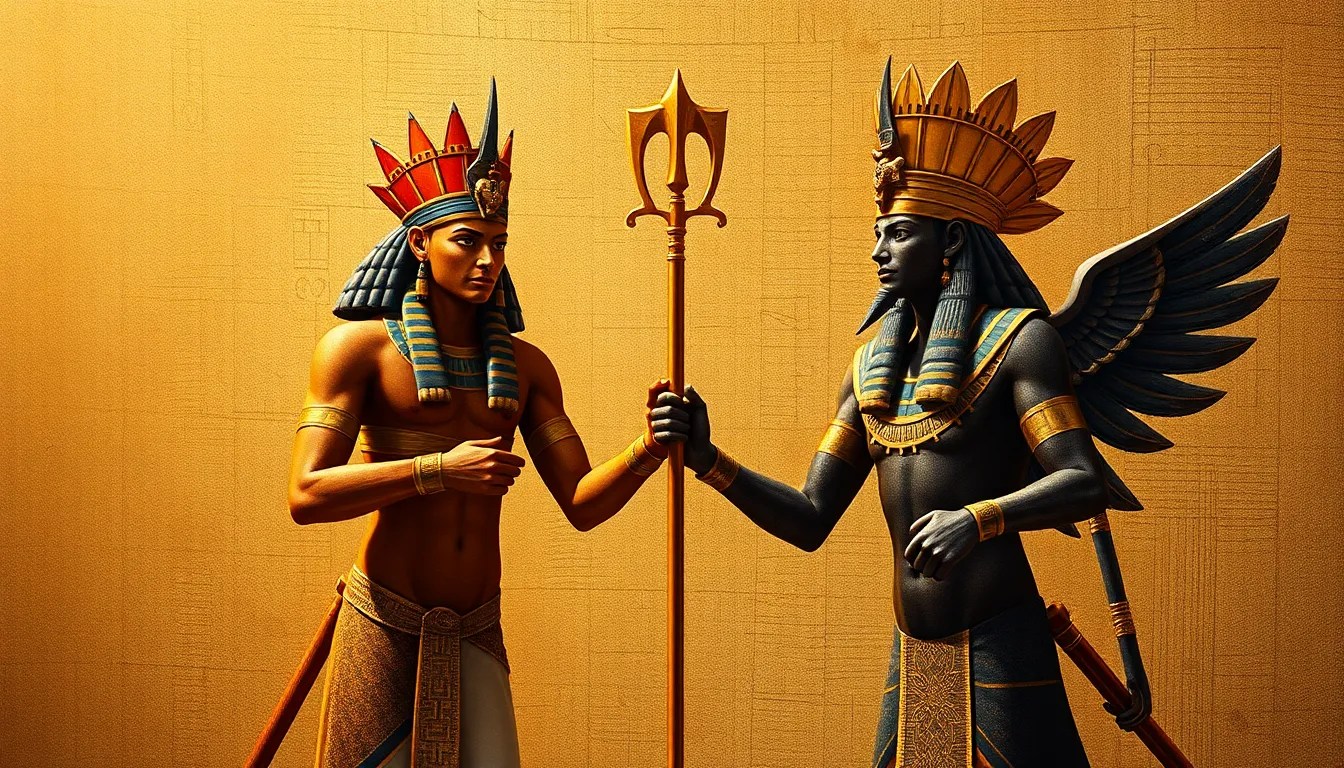The Dual Nature of Protection: Benevolent and Malevolent Deities in Egypt
I. Introduction
The ancient Egyptian culture is renowned for its rich tapestry of mythology, where deities played a critical role in everyday life and the spiritual realm. Deities were not only worshipped but were intrinsic to the Egyptians’ understanding of the universe and their place within it. The concept of duality pervades Egyptian mythology, where the interplay between good and evil, order and chaos, is essential for the maintenance of balance in the cosmos.
This article aims to explore the dual nature of protection as embodied by both benevolent and malevolent deities in ancient Egyptian belief systems. By examining their roles, attributes, and the myths surrounding them, we can gain deeper insights into how the Egyptians perceived the complexities of protection.
II. The Role of Deities in Ancient Egyptian Society
Deities were central to the spiritual and cultural fabric of ancient Egypt. They were seen as powerful beings who influenced every aspect of life, from the mundane to the divine.
- Spiritual and cultural importance: Deities personified natural and cosmic forces, providing explanations for the unknown and guiding moral and ethical behavior.
- Protectors in daily life and the afterlife: Egyptians relied on deities for protection against misfortune and chaos, both in their earthly existence and in the journey to the afterlife.
- Integration into rituals: Daily prayers, offerings, and elaborate rituals were performed to honor these deities, ensuring their favor and protection.
III. Benevolent Deities: Guardians of Order and Harmony
Benevolent deities were celebrated as protectors of order, harmony, and prosperity. They played crucial roles in maintaining Ma’at, the principle of cosmic order.
- Key benevolent deities:
- Osiris: The god of the afterlife, symbolizing resurrection and eternal life.
- Isis: A powerful goddess associated with magic, motherhood, and protection, often invoked for healing.
- Horus: The sky god and protector of the pharaoh, symbolizing kingship and victory over chaos.
- Attributes and symbols: These deities were often depicted with symbols such as the ankh (life), the crook and flail (sovereignty), and the Eye of Horus (protection).
- Myths illustrating protective roles: The myth of Osiris and Isis showcases themes of resurrection and protection from malevolent forces, highlighting their benevolence.
IV. Malevolent Deities: The Fearsome Guardians of Justice
Contrasting the benevolent deities, malevolent deities embodied chaos and challenge, essential for the maintenance of cosmic balance.
- Introduction to malevolent deities:
- Set: The god of chaos and storms, often associated with the desert and disorder.
- Apophis: The serpent of chaos that threatened the sun god Ra, representing the primordial forces of chaos.
- Necessity of chaos: In Egyptian belief, chaos was not merely negative; it was a necessary force that prompted order to be established and maintained.
- Myths depicting roles: The conflict between Set and Osiris illustrates the struggle between chaos and order, emphasizing that even malevolence serves a purpose in the divine plan.
V. The Interplay Between Benevolence and Malevolence
The duality of benevolence and malevolence is encapsulated in the concepts of Ma’at and Isfet, representing order and chaos, respectively.
- Ma’at and Isfet: Ma’at symbolizes balance, truth, and justice, while Isfet embodies chaos and disorder. The Egyptians believed that both forces must coexist for the universe to function optimally.
- Interaction in myths: Myths often depict benevolent deities confronting malevolent ones, illustrating the eternal struggle between these opposing forces.
- Importance of balance: The dynamic interplay between benevolent and malevolent deities underscores the Egyptians’ understanding that both aspects are essential to the natural order.
VI. Rituals and Practices Involving Both Types of Deities
Rituals in ancient Egypt often invoked both benevolent and malevolent deities, recognizing the need for protection from various forces.
- Protective rituals: Rituals were designed to invoke the favor of benevolent deities while also appeasing malevolent ones. For example, the use of amulets bearing the symbols of both types of deities was common.
- Significance of offerings: Offerings were made to both categories of deities, ensuring that benevolent forces were kept happy while also mitigating the threats posed by malevolent ones.
- Case studies: Temples dedicated to deities often featured altars for both benevolent and malevolent figures, highlighting the Egyptians’ understanding of the necessity of both in their spiritual lives.
VII. Modern Interpretations and Legacy
The dual nature of Egyptian deities continues to influence contemporary understandings of protection and spirituality.
- Contemporary relevance: The acknowledgment of both benevolent and malevolent forces in spirituality reflects a deeper understanding of life’s complexities and the balance required to navigate them.
- Impact on modern spirituality: Many modern spiritual practices draw upon ancient Egyptian symbolism, illustrating the lasting legacy of these beliefs.
- Cultural narratives: The duality of protection is echoed in various cultural narratives today, where heroes face challenges and adversaries, reinforcing the idea that struggle and protection coexist.
VIII. Conclusion
The significance of benevolent and malevolent deities in ancient Egyptian mythology reveals a complex understanding of protection that transcends simplistic notions of good and evil. The Egyptians recognized that both aspects were vital for maintaining balance in their lives and the cosmos. This exploration encourages further examination of Egyptian mythology, inviting us to appreciate the intricate layers of belief that shaped one of history’s most fascinating cultures.
As we delve deeper into the narratives and practices of ancient Egypt, we uncover timeless lessons about the dual nature of existence and the eternal struggle between order and chaos.




